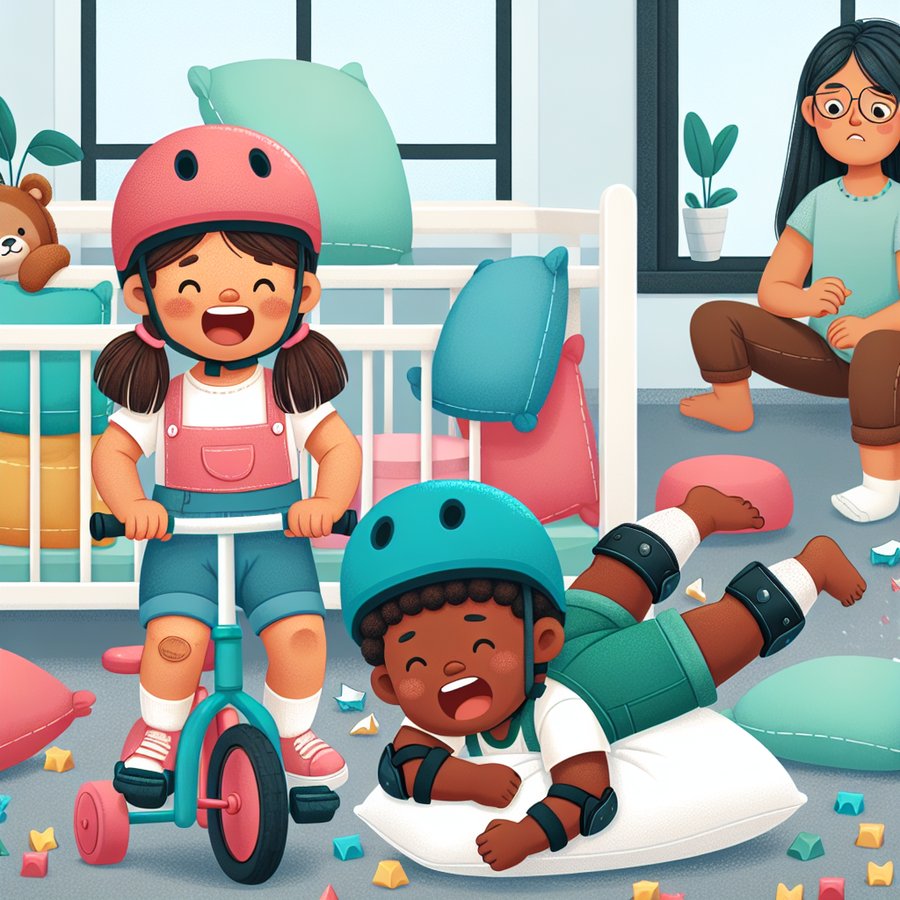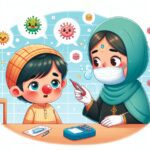Preventing head injuries: When to worry about bumps and falls is a crucial concern for every parent. The thin line between allowing your child the freedom to explore and ensuring their safety can sometimes feel overwhelmingly narrow. This guide aims to provide parents with comprehensive insights into preventing head injuries in babies, identifying when a bump or fall warrants a trip to the doctor, and fostering an environment that balances safety with healthy exploration.
Understanding the Risks of Head Injuries in Babies
Head injuries in infants can range from mild bumps to more severe injuries such as concussions or skull fractures. It’s essential to understand that a baby’s head is disproportionately large compared to their body, making them more prone to falls as they learn to sit up, crawl, and walk. The soft spots on a baby’s skull (fontanels) also contribute to their vulnerability, as these areas are less protected.
However, not every fall results in a head injury. Most of the time, the resilience of babies surprises many parents. But it’s vital to be vigilant and monitor for any signs of distress or unusual behavior after a bump or fall. For further guidance, the Centers for Disease Control and Prevention offers valuable resources on identifying concussion symptoms in children.
Preventing head injuries: When to worry about bumps and falls
Preventing head injuries in babies is primarily about creating a safe environment that reduces the chances of falls and bumps. This involves baby-proofing your home, ensuring that your baby’s play area is free from sharp edges, and keeping the floor clear of objects that could trip them. Additionally, using appropriate car seats and ensuring your baby is safely secured can prevent injuries during travels. For more on selecting the safest car seats, consider reading Choosing the Safest Baby Car Seats for Newborns.
Monitoring your baby’s development and encouraging safe exploration is also key. As babies grow, their curiosity often leads them to explore areas that may not be safe. Educating yourself on the developmental milestones can help you anticipate your baby’s next move and prepare the environment accordingly. An understanding of Recognizing and Responding to Signs of Developmental Delays can be incredibly beneficial in this regard.
When to Seek Medical Attention for Head Injuries
While many bumps and falls will be harmless, there are certain signs that indicate a need for medical attention. These include prolonged crying, vomiting, loss of consciousness, or any significant change in behavior. Additionally, if the bump results in a visible injury on the head, it’s prudent to consult a healthcare provider.
It’s always better to err on the side of caution when it comes to head injuries. If you’re ever in doubt, seeking the advice of a pediatrician can provide peace of mind. For those looking to learn more about first aid and when to seek medical attention, Essential First Aid Skills Every Parent Should Know is an invaluable resource.
Creating a Safe Learning Environment for Your Baby
To support your baby’s adventurous spirit safely, it’s crucial to create an environment that allows them to explore without undue risk. This means not only baby-proofing your home but also teaching your baby boundaries and safe play habits as they grow. Engaging in activities that develop their motor skills in a controlled environment can also reduce the risk of falls and injuries.
Additionally, the right toys and baby gear can make a significant difference in preventing head injuries. Opt for products designed with safety in mind, such as helmets for biking or outdoor play, and ensure that all baby equipment meets current safety standards. For more tips on selecting safe baby gear, Child Safety Standards for Baby Furniture and Equipment is a must-read.
In conclusion, while preventing head injuries: When to worry about bumps and falls is a legitimate concern for all parents, adopting a proactive approach to safety can significantly mitigate these risks. By understanding the common causes of head injuries in babies, taking steps to create a safe environment, and knowing when to seek medical attention, you can ensure your baby enjoys a safe, happy, and healthy exploration of the world around them. Remember, the goal is not to eliminate all risks but to manage them effectively, allowing your child to grow and learn with confidence.













